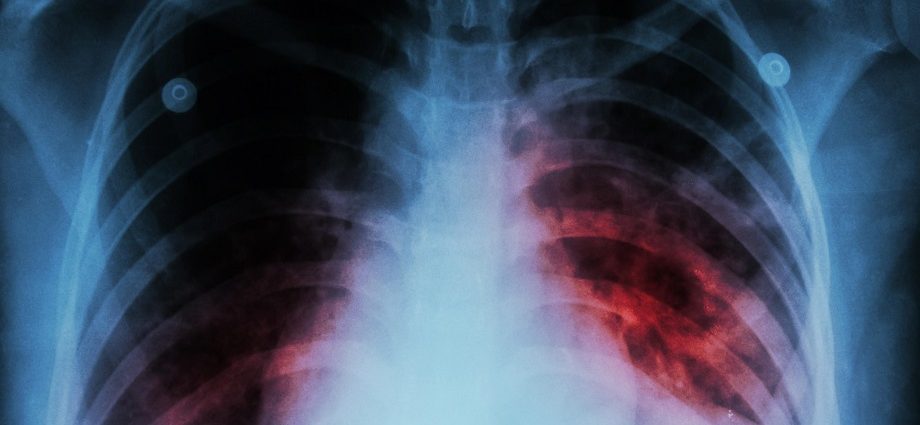For decades, before the development of penicillin, diseases such as tuberculosis became fatal. As a result of the coronavirus crisis, many have been interested in the disease, as the method of transmission is very similar: through drip.
Do you want to know what it is, how it originates, and how it is treated today with tuberculosis? Keep reading and discovering everything about this disease that continues to cause the death of more than 3 million people around the world.
What is Tuberculosis?
Tuberculosis is an infectious disease that is caused by the action of the germ Mycobacterium tuberculosis or acyl of Koch. This penetrates the patient’s airways through the drips generated by the transmitter when speaking, coughing, or sneezing. Inhaling does not imply the disease developing. It can be a simple transmitter, very similar to what happens with the covid-19.
It also happens that this bacillus can remain dormant in the body without developing the disease until there is an activator who reproduces it, passing the person exposed and infected to the sick.
On the other hand, tuberculosis may occur in different degrees of condition. Thus, in co-promoinfection, the disease evolves without symptoms. It usually happens in the children. If any type of symptomatology is presented, it is limited only to febrile pictures of medium intensity. In very sporadic cases the patient is seriously ill. When this infection is reactivated, post-primary tuberculosis is spoken of and is usually concentrated in the lungs, affecting the patient’s respiratory capacity.
In those patients who show symptoms of productive cough, asthenia, and intense sweating, accompanied by episodes of high fever and even blood sputum when coughing, we would talk about pulmonary tuberculosis. The most severe degrees of tuberculosis are reached when the bacteria circulates in the blood, especially in patients weakened by other pathologies.
These cases of millimeter tuberculosis are not common but can develop, just as it can generate a mutation that affects bones (bone tuberculosis) to urination (genitourinary) or symptoms of neck stiffness or focal problems (meningeal tuberculosis).
Causes
As we have explained, the onset of the disease is directly associated with contagion with the bacteria orally. However, in healthy organisms, the body itself is most common for the body to attack and eliminate it. Now, in those people who are immunosuppressed, either because of the presence of HIV, developing cancer, or having diabetes. These people are more likely to have this garment in their body once exposed to the bacteria and generate tuberculosis.
It should be borne in mind that intimate and continuous contact between transmitter and receiver is required. Systems such as pasteurization today avoid ingestion transmission.
How To Prevent Tuberculosis?
Beyond hygiene and treatment for certain types of food, one of the most effective ways to control tuberculosis outbreaks, which is a very contagious disease, is to identify and isolate cases. Community transmission is one of the livelihoods of the disease.
Symptoms
Symptoms of tuberculosis in people who suffer from it can occur as moderate fevers, productive cough difficulty breathing, even moments of asthenia, or absence of breathing. When these symptoms persist for more than two weeks, they must go to the medical center for the chest plates to be performed so that they show if there is affectation and therefore disease.
Is it true you can get blood out of your mouth? Yes, yes. If blood comes out during a dry cough process, the health center should be gone immediately. It could be tuberculosis or another disease, but always a symptomatic picture that requires treatment, regardless of its severity.
Treatment for Tuberculosis
Not treating tuberculosis, even in the 21st century, has only one consequence: the death of the patient. To this day, advances in medicine have made it possible to develop a mix of very effective drugs against bacteria. However, the side effects are equally very powerful for the body, so they should only be prescribed and followed by the evolution by specialists in this type of condition.
In any case, it is very important to complete all treatment to avoid relapses in the future, with regular reviews being carried out to confirm that it has been completely removed from the body. Also, in the case of a smoker, the first step to be taken will be to quit smoking. Tobacco helps the bacteria become more aggressive with the lungs, its main victim.
Currently, children receive the vaccine. However, caution should be exercised in infants with anaphylactic allergies to the egg, as it can lead to serious side effects for the child.
What happens in the case of pregnant women who test positive for tuberculosis? Can you be treated? Although there have been very specific cases of pregnant women with tuberculosis in the developed world, it is a possibility. In case of symptoms, the physician may prescribe isoniazid but only in the third trimester or after childbirth, as there is a risk to the fetus and the mother. In the case of the baby, the vaccine will be given to it, which does not prevent but at least minimizes its action in your body and still immature defense system.
Interestingly, TB treatment has not evolved in the last forty years. While it is true that for many societies it seems eradicated, the truth is that from time to time some particular cases of tuberculosis are reported. Of course, in developing countries or with minimal quality of life, the impact of this disease is still very high.
The fact that this presence has been so residual in the Western world is behind the low evolution and research to eliminate it. The Western interest developed is now focused on other types of infections and diseases.
